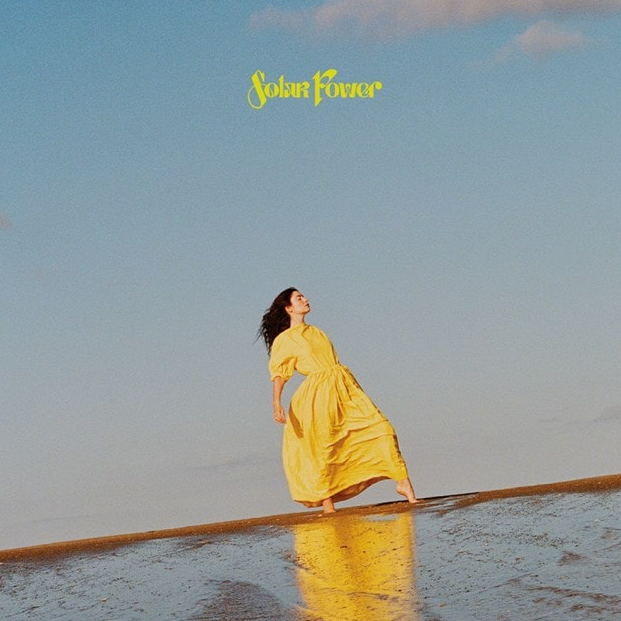An avid Lorde listener, I was excited to hear of the artist’s triumphant return to music after four years of patient waiting. As I counted down the hours to the release of her comeback single “Solar Power,” I kept refreshing Twitter to see what others had to say on this topic. An overwhelming amount of those tweets consisted of feelings of excitement for another “depressing” album, in which Lorde would describe sorrow, growing pains and heartbreak. Those tweets conditioned me to anticipate a darker sound, which surprisingly I did not hear in “Solar Power.” The bright, anthemic pop song instead dove into feelings of excitement for the summer.
Despite generally enjoying the song, platforms like YouTube, Twitter and TikTok all shared differing opinions of the track: that it was underwhelming, or that it had been reduced to being called “mall music” — a phrase often used to describe lackluster tracks following formulaic pop tendencies, including repetitive choruses and EDM-influenced instrumentals. “Solar Power,” though, sonically strayed from those general pop trends. It was an unusually breezy track that carried the same infectious quality as does the yearning for summertime. With lyrics persuading the listener to “Forget all of the tears that [they’ve] cried,” the track has a hopeful quality rare in pop music.
The pop music genre is oversaturated with songs that all relay the same message of bitterness. Our current pop princesses include Olivia Rodrigo and Billie Eilish, both of whom created debut albums with similar themes of teen angst and heartbreak. Over time, “sad” or “deep” music has become the standard, which can make “happy” music seem ingenuine or meaningless in comparison.
One of the biggest moments in pop music in recent years was the release of “Future Nostalgia,” an upbeat, dance-influenced album by Dua Lipa, where she mixed ’90s-inspired instrumentals with modern lyricism and cadence. Significantly, the album does not contain a single ballad or “sad” track. Dua Lipa acknowledged this choice in her GRAMMYs speech when she said, “I felt really jaded at the end of my last album, where I felt like I only had to make sad music to feel like it mattered.”
Based on recent advances in pop music, Dua seems to be right. Listeners value trends rather than artists creating songs that express their current state. When Ariana Grande released “Sweetener,” a more honest and experimental album that the pushed creative boundaries her previous albums were unable to, her fans did not appreciate the new direction. Grande’s “Sweetener” was almost exclusively produced by artist Pharrell Williams, his signature sound prevalent in many of the tracks, such as the bright “blazed” and funky “borderline.” The songs express similar sentiments of finding a forever love, which perfectly mirrored Grande’s personal life at the time. On the music review app Musicboard, however, listeners gave those tracks a 2.9 and 3.9 out of 5 stars, some asking, “Is this even music?”
The question remains — why were Lorde fans disappointed with “Solar Power”? The simple answer is that “Solar Power” is the first song written by Lorde that highlights the feeling of joy, something she avoided in her previous projects. The problem with such a switch in musical direction is that her fanbase had become accustomed to her lyrics and production choices, and thus expected similar styles in this song as well. While Lorde fans didn’t dislike “Solar Power,” they were disappointed not to hear a “Ribs 2.0” or another “Liability,” both tracks that follow the popular theme of sorrow, the feeling of being used. Her fans expected a song that they could relate to, lyrically.
Even so, music doesn’t always need to tell a story or paint a picture with its lyrics. Artists like Billie Eilish and Lorde have synesthesia, a neurological condition where one’s sensory stimulation causes them to “see” colors or to “taste” textures. As melodies meld together, this condition produces a stimulating sensory experience which they can see in colors. When creating music in this way, lyricism tends not to be the focus, and instead layered vocals and unique instruments take a front seat. These qualities are present in “Solar Power,” where Lorde builds harmonies with Phoebe Bridgers and Clairo, and she experiments with brass instruments. Lorde shared that she sees “Solar Power” as the color gold, which contrasts the ominous colors of her previous projects that she saw as gray (“Pure Heroine”) and violet (“Melodrama”).
The non-lyrical aspects of “Solar Power” that Lorde carefully cultivated are the primary reasons why I enjoy the song so much. Whether it be the care and attention she put into layering her vocals as the pre-chorus builds, or the saxophone melodies tucked within the chorus, Lorde created a vivid experience with the track. These subtleties stacked atop of one another bring “Solar Power” to life.
At the end of the day, music is incredibly subjective. A “perfect” album to one can be a skip for others. It seems, however, that for people to think music has value, it needs to delve into the darker subject matter and conform to the trendy sounds that listeners crave. While Lorde may have completely changed her lyrical direction with “Solar Power,” she was able to satisfy many with the summery pop song, including me. She doesn’t have to create another “Melodrama” to please critics and her listeners, as long as the music she produces encapsulates her genuine emotions — because at the end of the day, musicians are here to tell their personal stories, not their listeners’.
